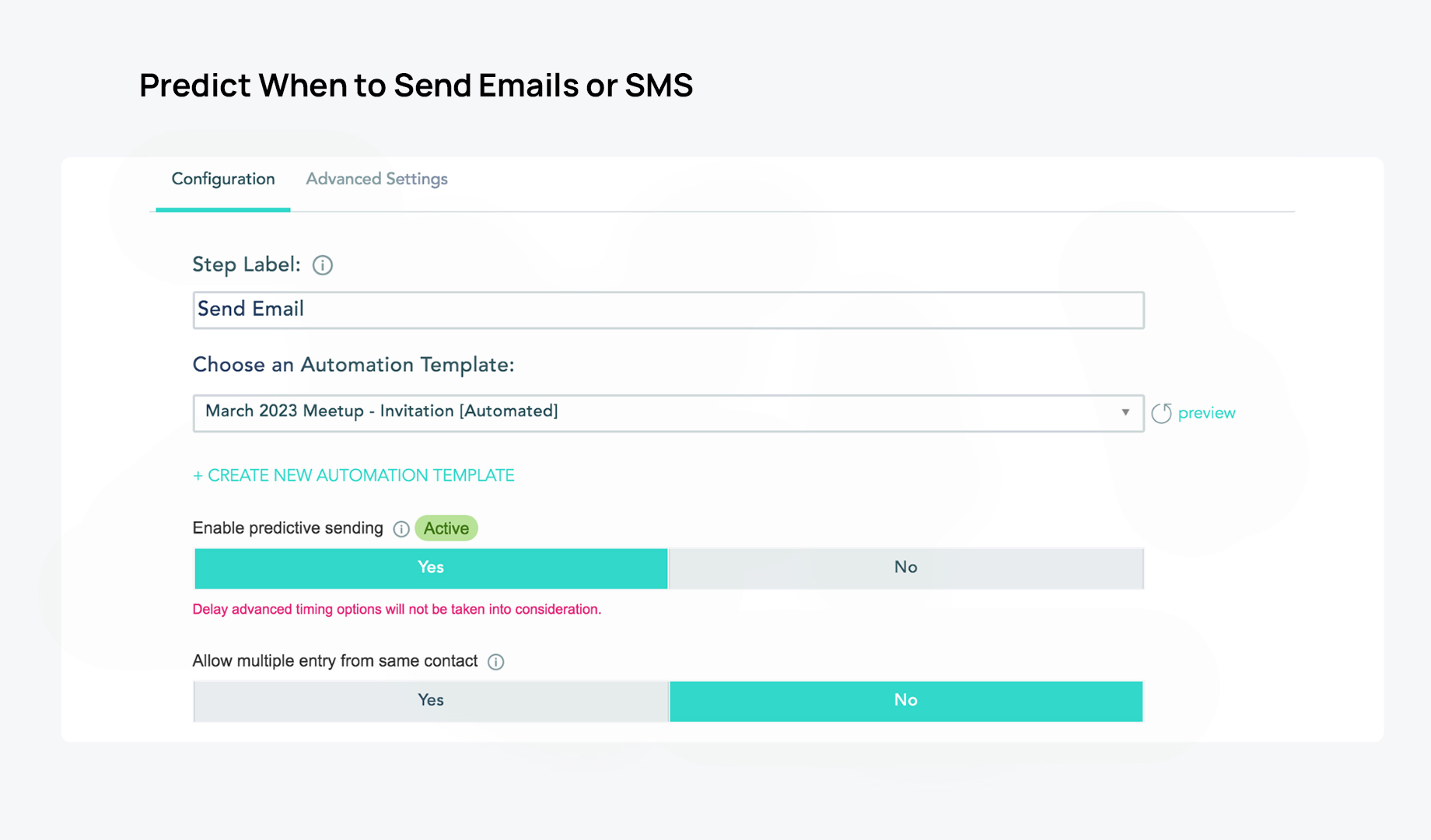Creating content that truly connects with your audience begins with understanding who you’re speaking to and what they care about right now. Some people skim, others stay.
But what makes the difference?
Relevance.
Artificial intelligence helps close that gap. It uncovers what matters to each audience segmentation group so you can take content personalization to a whole new level. Let’s take a closer look at what this means below.
Understanding Audience Segmentation
To create content that resonates, you need a clear picture of who you’re talking to. Audience segmentation helps you divide your broader audience into smaller, more meaningful groups based on user behavior, values, and needs.
These segmented user profiles help make your messaging more valuable and effective because your audience feels seen.
Some of the most common types of audience segmentation include:
Demographic Segmentation
This refers to grouping your audience by basic demographics, like age, gender, and income.
For example, a skincare brand might have these audience segments:
- Working professionals in their 30s who connect with sleek packaging, time-saving routines, and messaging like “5 minutes to fresh, polished skin before meetings.”
- Retirees in warmer climates who prefer simple ingredient lists, gentle products, and a calm, reassuring tone like “Kind to mature skin, even in the sun.”
- Teens who respond better to bold colors, influencers with acne-prone skin, and phrases like “Clear skin = confidence.”
Location adds some nuance here. A winter moisturizer campaign in Chicago might highlight wind protection and deep hydration. However, the same product in Phoenix might focus on sun-exposed skin recovery and a lightweight feel.
Behavioral Segmentation
Behavior tells you what people actually want.
Are leads reading your blog, clicking product demos, or abandoning carts? These actions reveal intent so you can group them accordingly and offer tailored next steps.

Take a cooking site, for example.
Someone who regularly reads vegan recipes, explores plant-based cookware, and bookmarks sustainability tips is clearly signaling their values. Instead of a generic pop-up, offer them a downloadable vegan meal planner and a kitchen sustainability checklist.
In this case, you might segment visitors like this:
- The abandoner: Adds cookware to the cart but doesn’t purchase.. Trigger a cart reminder with a quick recipe that uses that item to make the product feel essential.
- The eco shopper: Clicks green-living content and browses compostable tools. Offer discounts on eco-friendly bundles and tips on reducing kitchen waste.
The curious cook: Reads how-to articles but hasn’t browsed products. Nurture with beginner-friendly emails and recipe bundles.
Behavior is dynamic, so make sure to revisit it often. What worked last month might shift as your audience’s needs change.
Psychographic Segmentation
This type of audience segmentation goes deeper. It starts with questions like, ‘What drives your audience?’ What do they value, and what frustrates them?
Messaging is key to getting psychographic segmentation right.
Take a fitness app, for example. Some users are motivated by weight loss and respond best to messages around calorie tracking and quick cardio workouts. Others are driven by strength-building and want content on progressive lifting programs and nutrition for muscle growth. A third group may focus on mindfulness, preferring messaging around stress relief, meditation, and gentle movement. Same app, but three very different motivations.
Or consider a SaaS platform. Budget-conscious startups may care most about affordability and flexibility. Enterprise buyers are more likely to prioritize security, integrations, and compliance. Meanwhile, agencies want scalability, multi-account management, and strong support. Each segment is making decisions from a different mindset, and the way you communicate with them needs to reflect that.
When brands lean into these differences, their messaging feels more relevant and personal. That’s the power of psychographic segmentation—it helps you connect with the values and emotions behind each decision, not just the surface-level actions.
MyFitnessPal is an app that posts YouTube videos on nutrition:
The Role of AI in Content Personalization
Once your segments are defined, AI becomes your personalization engine.
It helps you gather insights and respond to audience signals faster and more precisely than any human team could manage alone. Let’s explore this more below.
Data Collection and Analysis
AI algorithms can analyze browsing history, purchase behavior, device usage, and more.
For agencies, this means you can detect valuable client signals in real time. For example, if a prospect visits your client’s pricing page multiple times and watches several product demos, AI can flag that lead and automatically deliver the right content—like a case study for credibility, a discount offer for budget-conscious buyers, or an invitation to book a sales call.
This makes the buying journey smoother and helps agencies support their clients with more targeted campaigns, without requiring manual intervention at every step.
Machine Learning and Predictive Modeling
Machine learning looks back AND ahead. It finds patterns, like how people who download a certain guide often request a demo within days.
It can then spot others following the same path and offer them the next helpful step before they even ask for it. This is predictive segmentation in action. And it’s pretty cool. 😍
Natural Language Generation (NLG)
Content generation and natural language generation tools help you scale your message while making each version feel personal. Instead of rewriting content from scratch, AI fine-tunes the tone, length, or structure to match the recipient.
But you stay in control. Want a more playful tone for a younger segment and a more professional one for senior decision-makers? AI helps you maintain consistency without creating everything manually.
Your customer support reps can also use it to answer more questions at scale without losing their human touch.
Key AI-Powered Personalization Techniques
Let’s explore where these AI capabilities are applied in real-time, across your digital experience.
Dynamic Website Content
There’s nothing that creates a better customer experience than a dynamic website.
(This means your homepage adapts dynamically to each visitor, reflecting their browsing history, preferences, or location.)
For example, a first-time visitor from Canada might see localized shipping info right away. Someone returning after viewing your “team productivity” pages might get shown tool comparisons or onboarding guides.
When headlines, personalized product recommendations, and banners reflect someone’s interests, your site becomes more helpful and less overwhelming.
Travel brands like Maaltalk do this well. Its AI travel app uses smart personalization based on past bookings, browsing habits, and even social signals. Solo travelers who typically book hostels and hiking adventures receive recommendations on budget-friendly trips and gear, while families are shown kid-friendly resorts and group activities.

MaalTalk suggests the right trips and adapts the entire experience. Same platform, different journey. And that’s what keeps people coming back.
Automated Email Personalization
Modern email marketing tools personalize far beyond greeting lines. They can adapt subject lines, reorder product displays, adjust offers, and even tweak button copy based on how people engage.
If someone tends to open email communications at night and clicks on discount offers, your system can time evening sends and highlight promotions upfront.
These take smart email campaigns to a whole new level.
Chatbots and Conversational AI
When trained well, bots can guide conversations and pitch offers using past behavior and current feedback as context.

Let’s say someone has been comparing business class travel packages for ten minutes. A smart chatbot won’t suggest budget flights. It’ll highlight premium upgrades or share reviews from similar business travelers.
The goal isn’t to impress with AI technologies. It’s to be helpful without delay.
Integrating AI Personalization Into Your Workflow
You don’t need to overhaul everything at once. Start small (where your data is strongest) and build from there.
Here’s how to integrate AI personalization into your workflow:
Choosing the Right AI Platform
If your AI tool doesn’t integrate with your CMS, email platform, or CRM, it can create roadblocks. ➜ Look for tools that plug in cleanly with your existing setup so you can scale efficiently without tech headaches.
Setting Up Data Feeds and Tagging
AI only works if your data makes sense. Use clear tags to define your content (e.g., “webinar replay,” “first-time offer”) and user actions (like “clicked checkout,” “watched tutorial,” “ignored onboarding”).
AI can help you spot these differences by tracking how people react and the feelings behind them. That might be via user feedback, comments, likes, shares.
➜ Create detailed reports from this data so your team can learn which segmentation strategies work best. If you use Word to create your report, upload it to a Word to PDF converter and present the final version in your next meeting.
Provide each person with a copy of the PDF and discuss how to apply the insights.

More on metrics and ROI in a bit.
Testing and Optimization
AI enables you to experiment quickly and select the best-performing campaigns in seconds.
A/B test everything from CTA language to email layouts. Track what drives customer engagement or conversions, and then roll out the winning elements more broadly.
➜ Treat optimization as an ongoing habit. Have content managers implement content review processes to make sure your team has gone the extra mile here.
Let’s explore this more below. 👇
Measuring Success and ROI
Even a smart personalization strategy needs proof that it works. Choose metrics tied to outcomes when measuring your content creation, rather than vanity statistics. Here’s what to pay attention to:
Engagement Metrics
Track time on page, scroll depth, email opens, and clicks. If your personalization is on point, these numbers should reflect it.
If they don’t? Revisit how you’re defining customer segmentation or whether your content speaks to their actual needs. Test. Test. Test.
The more you experiment, the closer you’ll get to understanding your audience better.
Conversion and Revenue Lift
Track how personalized content influences signups, purchases, or other meaningful actions. Personalized product suggestions based on recent browsing behavior often outperform static layouts when it comes to driving conversions.
Long-Term Brand Impact
The real power of personalization is relationship-building.
Watch for signs such as repeat visits, upgrades, or increased interest in related products. When personalized messaging is effective, it transcends short-term clicks and fosters long-term value and loyalty.
This is a strong indicator that your audience segmentation is delivering lasting impact.
To measure long-term brand impact:
- Monitor your email engagement rate (ER), especially for segmented campaigns. High open and click-through rates are strong indicators that your message is hitting the right note.
- Track repeat purchase rate (RPR) to understand how often customers come back (and if personalized follow-ups are working).
- Measure your customer lifetime value (CLTV) to see how personalization affects your overall retention and spend.
Wrapping Up
Different people care about different things. They want content that reflects that and meets them where they are.
Thankfully, AI helps you deliver relevant messages that align with someone’s preferences, actions, and timing without overwhelming your content team. With the right systems in place, you can use it to personalize at speed, maintain quality, and create content that feels like it was made for each person who sees it.
While not every brand needs all these capabilities, platforms like VBOUT already help with predictive email sending, AI chatbots, and AI content generation — the building blocks of effective personalization. If you’d like to see how these can fit into your workflow, try VBOUT now.
About the author
With over 20 years of digital marketing and e-commerce expertise, Shane Barker founded TraceFuse. He is well-versed in the Amazon ecosystem and brand reputation management. His insights have been featured on platforms like E-Com Engine Partner Spotlight and the 2 Sellers and a Microphone Podcast, highlighting his significant impact on these industries.
Don’t forget to share this article


